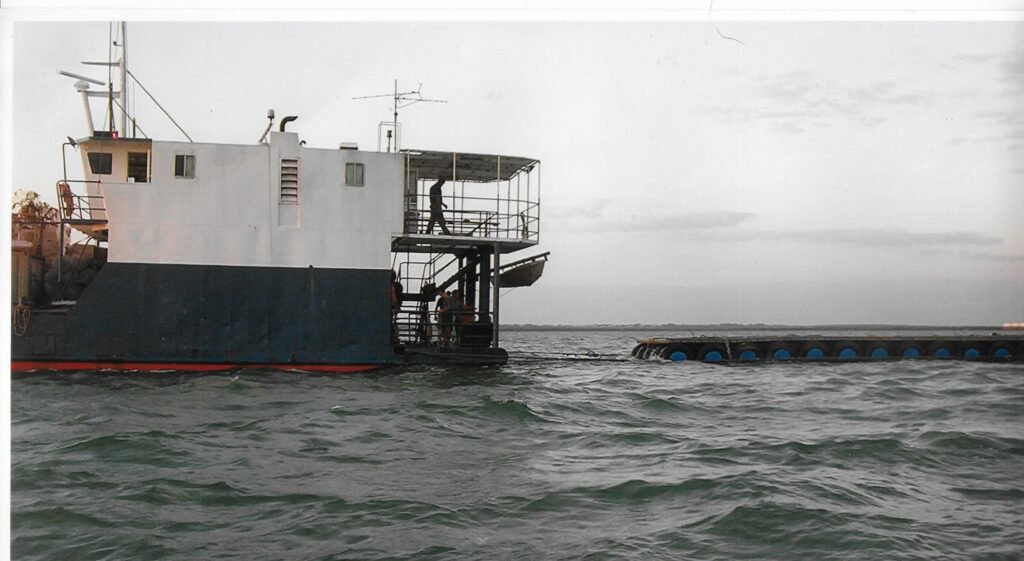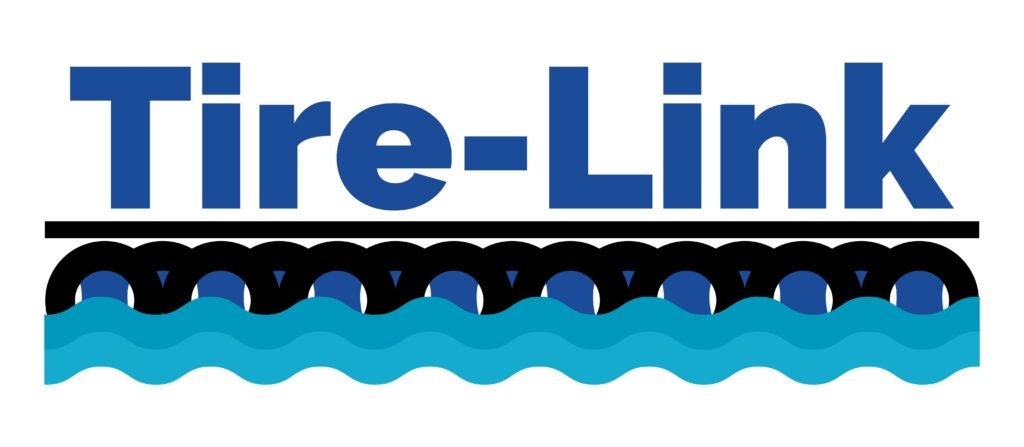
Q: What are the dimensions of a Tire-Link jetty?
A: The minimum jetty deck width is 1.7 metres, the minimum jetty length is roughly 6 metres. Jetty width and length is configurable: width can be added in units of 0.6 metres, and length can be added in units of roughly one tire. For reference, the jetty shown below is roughly 2 metres wide and 40 metres long.
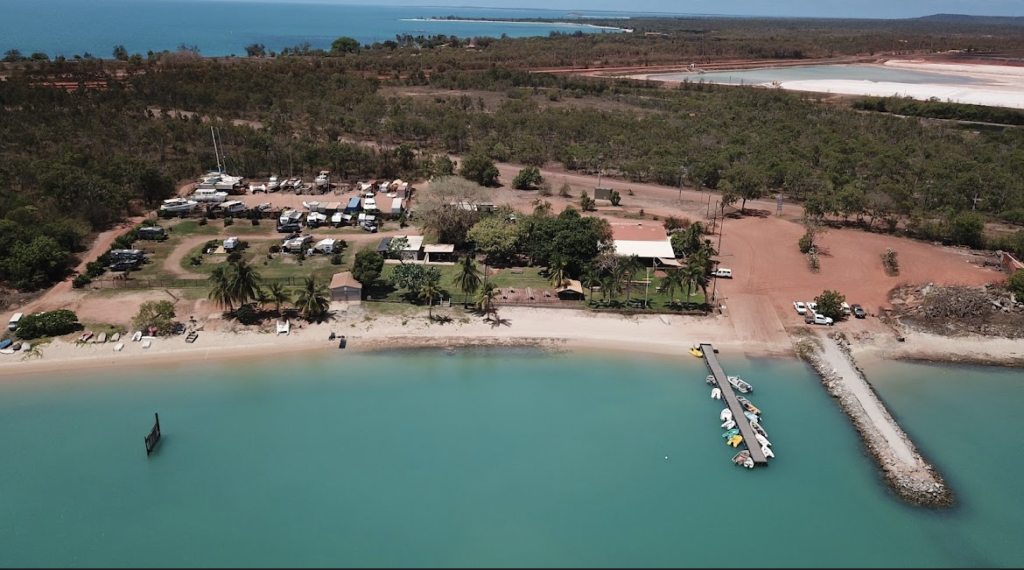
Q: What are the key components of a Tire-Link jetty? What makes it so strong & stable? What provides the flotation?
A: The key component is the truck tires. The strength comes from the inherent toughness of the tires and the shear strength of the stainless-steel bars that link the tires together. Flotation comes primarily from polyurethane foam that fills the body of every tire (the part of the tire that would have been filled with air during its first career as a truck tire), and secondarily from polyethylene floats that are fitted into the holes of all outer tires and some inner tires. A Tire-Link jetty cannot sink. The decking is secured to the tires in such a way that it cannot move sideways; the deck boards are assembled so that they cannot move up and down relative to their neighbors to create a trip hazard or a pinch hazard. Tire-Link jetties are stable enough to be used as a breakwater in some locations, as shown in the photo below.
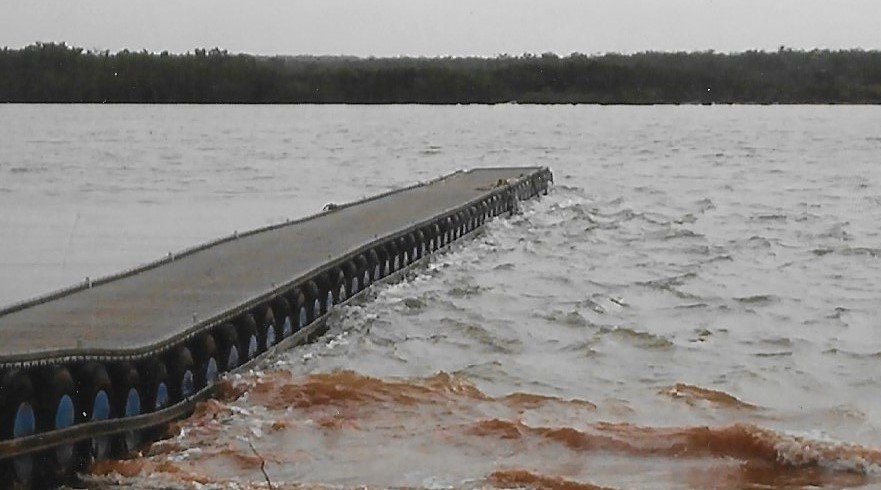
Q: How do people access the jetty when the water level is low?
A: One of the key differences between a Tire-Link floating jetty and other floating jetty systems is that Tire-Link jetties do not require the use of a separate gangplank. With a Tire-Link jetty, the jetty will gradually slope down as the water level changes because the entire structure is always supported by the water or the land. For reference, the gradient of the beach in the photo below is roughly 12%.
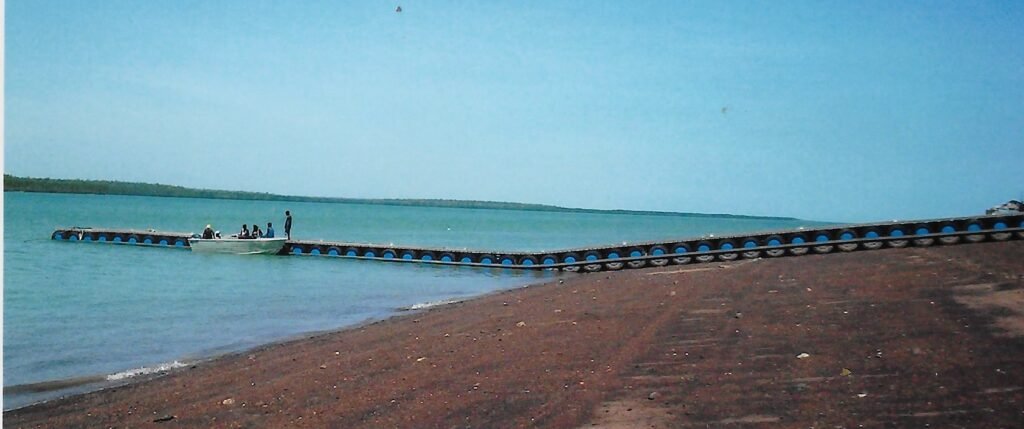
Q: How is a Tire-Link jetty anchored to the shore and held in place?
A: Typically, one end of the jetty is fastened to concrete above the high-water line. In addition, there will be some anchors at the other end of the jetty and potentially at a midpoint, depending on the jetty size. For each project, our team will determine the appropriate anchoring specifics based on location, water current, water fluctuation range, and other site-specific variables.

Q: Are Tire-Link jetties used alongside a boat ramp, or instead of a boat ramp?
A: A Tire-Link jetty is ideal alongside a boat ramp. When a car and trailer backs down the boat ramp and releases the boat into the water, the boat can be attached to the jetty. Tire-Link jetties come standard with cleats for tying up boats. Guests can safely and efficiently board the boat from the jetty. The height of the jetty relative to the water line makes it ideal for loading and unloading guests and equipment.
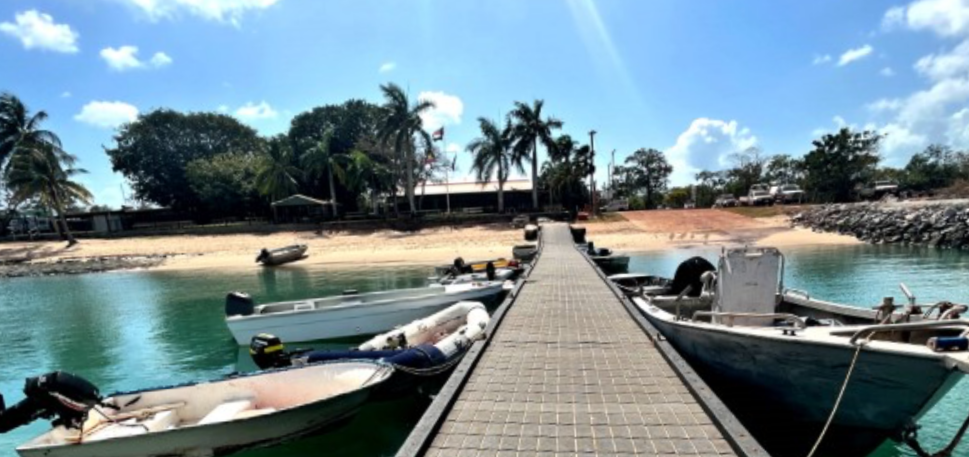
Q: Can Tire-Link jetties be towed in open water?
A: Yes! We have built jetties in one location and towed them to another location. We have worked with clients who use boats to tow their Tire-Link jetty from one location to another, depending on the season and their work schedule.
